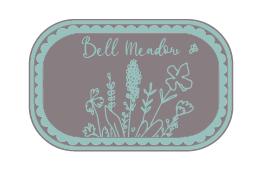All Ireland Pollinator Plan
Zinnias are perfect for pollinators as they are easy to access. I grew lots of different zinnias in the polytunnel last summer to trial them as I had never seen most of them in reality before, bar the ones I grew myself. So many different colour ways are available. From the very bright ones as pictured to the polar while.
Delighted to say Bell Meadow Flowers is now a business supporter of the All Ireland Pollinator Plan. I first heard of the Pollinator Plan when I went to Bloom with my mother and my children in 2018. I kept the leaflets all the years and my mother had as well. According to their website.
One third of our bee species are threatened with extinction from Ireland. This is because we have drastically reduced the amount of food (flowers) and safe nesting sites in our landscapes. The All-Ireland Pollinator Plan is about all of us, from farmers to local authorities, to schools, gardeners and businesses, coming together to try to create an Ireland where pollinators can survive and thrive.
Delighted to be a Business Supporter of the Plan, now to decide on a few projects to provide extra support for pollinators.
To explain my interest in joining the plan, we live on former agrictultural land in an area that has been subjected to chemicals and has most of its hedgrows butchered (sorry there is no more appropriate word!) every year for decades. The year we moved in the front hedgrow was cut without agreement and I was horrified by the appearance of it, the trees and shrubs were reduced to nothing. Subsequent years involved me listening out for the noise of the hedgerow cutters and running out to ensure the hedgerow was left alone! A decade on and life returned to the hedgerow , also the home of a family of rabbits, and last year was so filled with tree blossoms, wild roses and ivy as well as sycamores, blackthorns, holly, elderberries. All this happened very slowly and at the time I did not realise how it would help polliantors. I knew it was helping the birds and looked a lot better as well as providing wind protection for the garden. We also interplanted other native trees into the hedgrow over the years with more to add this year. What also became apparent when we tried to grow fruit and vegetables in our first couple of years was that nothing really grew, unless it was something like carrots that didn’t require pollination. But pear trees wouldn’t bear fruit, pumpkin blooms came and went, rabbits ate most of what I planted the first year, so slowly gardening reduced to container growing on the patio. It seemed that the place was too exposed and too wild.
More super bright Zinnias in the Polytunnel!
We did plant trees but I sort of gave up on the vegetables and fruit because it seemed impossible! I grew up in a suburban semi-detached house, and our previous house was the same with a walled small back garden but everything I grew thrived, even scented jasmine. I was at a loss of how to deal with this wild exposed area. Through the years various wildflowers and others began to grow in the garden, it was as if nature was trying to heal the garden. We had clover spread across huge areas one year, there’s lots of patches of ragworth, fireweed all of which attract pollinators and of course the dandelions came. Watching David Attenbourghs series on plastic one January gave me the motivation I needed to get trying again and I started with creating a herb patch around existing stones that were in the garden and two raised beds. It was like sticking a flag in the middle of a field and declaring ownership!! And of course two beds became a lot more and the garden is slowly being formed.
The vegetables came first and reading up on pollination. The fear of lack of bees had me hand pollinating pumpkins and courgettes the first year, which involves paintbrushes and daily checking of blooms first thing every morning. But the vegetables did bring polliantors but nothing like the amount that arrived for flowers. With the much greater number of flowers that grew last year, the pollinators were here in so many numbers. From the bees to the butterflies and a so many bugs, beneficial and otherwise, I was constantly trying to identify them. When I was choosing seeds for the seed collection I did so with a few things in mind and choosing polliantor friendly ones was so important. I choose one mix specifically for bees and another for butterflies. These are mixes that are designed to attract and feed pollinators. Both can be broadcast very easily in a prepared bed.
By signing up to the All Ireland Pollinator plan you can choose what actions to take in your garden. Some of the suggestions I am already doing here but I will be taking on certain tasks to do like creating a clover patch or making more nesting areas and adding perennials what will be of benefit year after year. I’ll be writing about my progress as the year goes on.
Thanks for taking the time to read!
Happy growing
Maria





